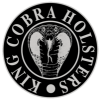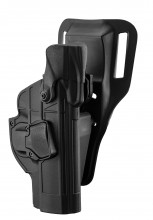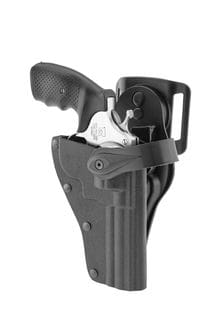-
Hunting Weapons
-
Regulated weapons
-
Sporting & Leisure Weapons
-
Alarming & Self-Defense Weapons
-
Optics, Lamps and Electronics
- Optics, Lamps and Electronics
- Cameras and video surveillance
- red dot scope
- hunting scope
- shooting Glasses and tactical
- Glasses and red dot compressed air
- Rangefinders and collimators
- Assemblies, rails and adapters
- Binoculars, telescopes, observations glasses
- Camera and night vision
- Talkie Walkies & radios
- Flashlights & torches
- Laser and tactics lampes
- Metal detector
- Piles & batteries
-
Hunting Defense Ammunition
- Hunting Defense Ammunition
- hunts cartridge
- central percussion Ammunitions
- Shooting & regulated ammunition
- Reloading equipment
- Reloading consumables
- Black powder ammunitions
- 22 lr, 17 HMR, 6mm & 9mm Flobert Ammunitions
- Blank cartridges, gaz cartridges and rubber bullets
- Smoke and flare
- Lead and ammunitions for airguns
- Storage boxes for bullets
-
Accessories & Bags
- Accessories & Bags
- hunting horns and whistles
- Bird calls, rings
- Town and country planning
- fox Traps and harmful, hide and camouflage
- maintenance products
- Set of cleanings and brushes
- Plates of coats, buscs and skullcap
- Gongs and targets
- Aiming, handlebar and grenadieres
- bipods,tripods and pirsch sticks
- Walking stick and seats
- Coffres & verrous
- Suitcases, rifles cases and backpacks
- Sholder bags, cartridge belts and straps
- Car equipement
- Hearing protection, masks & eyewear
-
Hunting Outfits & Acc. Dogs
-
Archery, Cutlery & Gifts
- Archery, Cutlery & Gifts
- Crossbows and tiles
- Bows and arrows
- Arrows, points and feathers
- Targeting, archery accessories
- slingshots and blowpipes
- Straight hunting knives
- Tactical straight knives
- Survival knives
- Folding knives
- Swords and sabres
- Machette & hatchet
- Survival and to outdoor
- Children's games and cuddly toys
- Portes fusils, écussons à trophées.
- Cadeaux
-
Airsoft & Paintball
- Airsoft & Paintball
- Airsoft - secondary weapon
- Airsoft - primary weapon
- Airsoft - Batterie & fusibles
- Airsoft - Grenades and mines replicas
- Airsoft - Balls, Gas & Co2
- Airsoft - Airsoft accessories
- Airsoft - Tactical equipements
- Airsoft - Professional equipement
- Airsoft - Ground equipment
- Airsoft - Clothes and protections
- Airsoft - Bags, carrying bags and luggages
- Airsoft - Spare parts & upgrades
- Paintball - Guns and rifles
- Paintball - Loaders & tubes
- Paintball - Ammunition
- Paintball - Compressed air and Co2
- Paintball - throwers accessories
- Paintball - Masques and helmet
- Paintball - Harnais/vestes tactiques
- Paintball - Games outfit
- Paintball - Cleaning and maintenance
- Paintball - Ground accessories
- Swap-Archery
all products «Restricted weapons - Holster & equipement - Holsters pour armes»
A holster allows the weapon to be carried either on the belt or on the shoulder. Concealed or visible port, you will find a wide selection of holsters according to your needs.
1-3 on 3 Products
| SKU | Designation | French Law | MSRP | Stock |
|---|---|---|---|---|
| ET3495 | HOLSTER KING COBRA EVOL 5 2.0 HOLSTER STEYR L9/M9/C19-A2 KYDEX RETEN | Vente libre |
125.00 € incl. tax
62.5 € incl. tax |
Available
|
| SKU | Designation | French Law | MSRP | Stock |
|---|---|---|---|---|
| ET1101 | Belt under shirt S / M | Vente libre |
67 € incl. tax
|
Available
|
| ET1102 | Belt under shirt L / XL | Vente libre |
67 € incl. tax
|
Available
|
| SKU | Designation | French Law | MSRP | Stock |
|---|---|---|---|---|
| ET1700G | Lefthanded case ALFA PROJ / SW | Vente libre |
136 € incl. tax
|
Last Available
|
1-3 on 3 Products
There are several kinds of holsters. Here are the main ones: - Wear Apparent: Worn over the clothes of the wearer and is visible to all. There are three types: Belt holster: traditional port, widely used by law enforcement, it is worn on the user's belt. Thigh holster: suspended from the belt and held at the thigh with the help of straps, the thigh holster allows quicker and easier unsheathing in a seated position, for shooting from a vehicle for example. Chest holster: very widely used by the military or intervention forces, it is, in fact, a quick connection system for transferring the holster and the weapon from a MOLLE platform (support that allows you to attach any accessory to your belt) to another. This makes it possible to have several port systems in one. - Holsters with discreet carry: there are two large families of holsters with concealed carry: The IWB (Inside the WaistBand) holester: inside the belt, it is worn in the pants while being fixed on the belt. Much less comfortable for the wearer, it is mainly used for its very undetectable side. The OWB holster (Outside the WaistBand): it is worn outside the pants, on the belt. Other types of discreet carry: Shoulder holster: Worn at shoulder level and makes the weapon accessible under the arm. Popularized by Clint Eastwood with the character of Inspector Harry. Ankle holster: mainly used for the discreet carrying of a compact or sub-compact type emergency weapon. It is nevertheless very impractical because of the overly restrictive movements that the user will have to make to access it. Which manufacturing materials to choose? - Polymer: preferred material for all modern holsters because it is ultra-strong, lightweight and offers manufacturers the possibility of adding locking technologies for better weapon support. The polymer also makes it possible to make holsters in the specific shape of a weapon model. - Leather: traditional material in the manufacture of holsters, leather is highly recommended for concealed carry. Flexible, it takes the shape of the weapon over time. However, it requires more rigorous maintenance than polymer. - Kydex: a light and resistant thermoformed plastic. Thin material, it is prevalent for OWB holsters. It is less comfortable than leather for an IWB port. Kydex remains more expensive than its injected polymer equivalent. - Nylon: mainly used for universal holsters, it is a good compromise between Kydex and leather for its strength, lightness and comfort. It requires little maintenance, however, there can be no modern retention system unlike injected polymers. What preferred retention levels? Moderate retention: the weapon is secured thanks to a clamp in the holster. This adjustment can be adjusted with a screw generally located under the trigger guard. A simple pull releases the weapon from its holster. High retention: the most widespread in the world. A locking mechanism prevents the weapon from being extracted from the holster with a simple pull. To take out the weapon, it will be necessary to exert pressure with the index finger on the locking button (at the height of the trigger guard). Optimal retention: a third locking mechanism added to the high level of retention, it is, in general, a cover or a tab located on the top of the holster and which covers the hammer and the base of the slide . Three gestures are therefore necessary to extract the weapon from this type of holster.
In France products of categories A, B, C or D are subject to rules of purchase, port, transport and detention. For more details please consult the link below.
Classification of weapons according to the French Internal Security Code
The recommended retail prices are listed as a guide..
Pictures are not contractual. Photos of product may be different with the final products.
Texts, brands and characteristics are not contractual as they are liable to change depending on arrivals.
Classification of weapons according to the French Internal Security Code
The recommended retail prices are listed as a guide..
Pictures are not contractual. Photos of product may be different with the final products.
Texts, brands and characteristics are not contractual as they are liable to change depending on arrivals.
Receive good deals
The essential Europ-Arm news and offers dedicated to our customers
The recommended retail prices are listed as a guide..
Pictures are not contractual. Photos of product may be different with the final products.
Texts, brands and characteristics are not contractual as they are liable to change depending on arrivals.
Pictures are not contractual. Photos of product may be different with the final products.
Texts, brands and characteristics are not contractual as they are liable to change depending on arrivals.
- Winchester: Choose your cartridges carefully depending on the game.
- Hunting “silencers”: Why approve them?
- Hera Arms Company - Presentation and product ranges
- Black Fire Company - Presentation and product ranges
- Lead-free cartridges!
- YILDIZ company - Presentation and product ranges
- Chiappa FireArms Company - Presentation and product ranges
- Renato Baldi Company - Presentation and product ranges
- Sierra: The different projectiles and their characteristics.
- Norma: the different warheads and their characteristics
- Shooting glossary
- The different types of warheads at Winchester: What does it correspond to?
- Weapons: definitions in the legal sense
- Red dot sights: How to choose?
- Regulations on chargers by the SCAE
- Archery: choose your arrow spin
- Company Davide Pedersoli - Presentation and product ranges
- Choose your thermal night vision
- SIA holder space user guide
- The different hunting modes
- The disciplines of sport shooting
- EUROP-ARM IS RECRUITING!
- 5 tools for a good natural referencing of your website
- LE SIA : RGA et LPN - Les grandes étapes
- Paintball Vocabulary
- Legal information and regulations
- Comment les internautes ont trouvé notre site jusqu'à maintenant ?
- Ici, Europ-Arm répond à vos questions !
- Articles web - On parle de nous !
- Charte Europ-arm / Sport-attitude / Armsco de protection des données personnelles dans le cadre de la RGPD
- Europ-Arm helps to choose the right shotgun
- Le conseil de l'expert ! Comment bien choisir sa paire de jumelles ?
- Europ-Arm website support
- Catégories des armes
- Hunting and shooting whosaler
- Airsoft vocabulary
- Who are we ?



